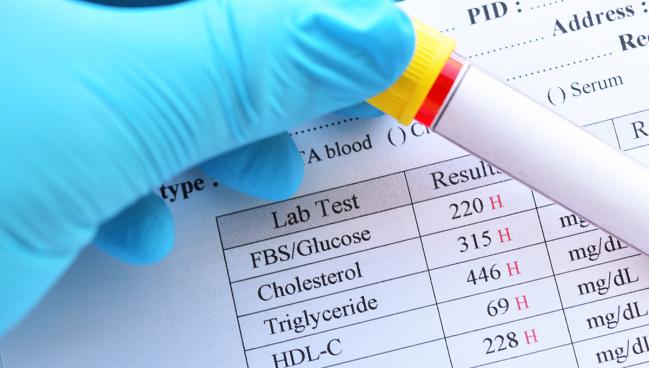FH Patients Face Unchanging Acute MI Risks Plus Very Late Diagnoses
At EAS, one study highlighted the higher relative ASCVD risks for FH patients, while another showed varied care in Europe.

MILAN, Italy—Patients with monogenic familial hypercholesterolemia (FH) are at an elevated risk of acute myocardial infarction compared with the general population, according to results of a new analysis from Norway, and this heightened risk hasn’t budged in more than 15 years.
Given the availability of effective medications to lower LDL-cholesterol levels, investigators say the results are a little disappointing and likely attributable to lack of access to more-potent drugs.
“We had hoped to see the gap was closing,” senior investigator Kjetil Retterstøl, MD, PhD (University of Oslo, Norway), told TCTMD. “We have efficient treatments now. Up until the PCSK9 inhibitors were approved, we didn’t really have a chance to give people with FH the same treatment so they could be equal with others. But that has not been done because of the high price of the drugs. I think that’s a challenge for payers to understand that these people have a genetic mutation. They’re innocent people—they lead very healthy lifestyles and yet they have MIs at a much higher rate than others. It shouldn’t really happen in a rich country.”
FH is an autosomal dominant disease caused by mutations in genes encoding the LDL receptor (LDLR), apolipoprotein B (APOB), or proprotein convertase subtilisin/kexin type 9 (PCSK9), and these mutations affect the clearance of LDL cholesterol from the blood. As such, FH patients have severely elevated LDL-cholesterol levels compared with the general population, which leads to premature atherosclerotic cardiovascular disease (ASCVD). Historical data suggest the risk of major CVD events in FH patients is roughly two to three times higher than those without FH.
Given their high levels of LDL cholesterol, said Retterstøl, FH patients are often unable to achieve targets set out in the European guidelines without the use of combination therapy, such as high-intensity statin therapy plus ezetimibe or one of the more-potent PCSK9 inhibitors, alirocumab (Praluent; Sanofi/Regeneron) or evolocumab (Repatha; Amgen), which gained CE Mark approval in 2015.
Still Seeing a Higher Risk of MI
The Norwegian study, which was presented this week at the European Atherosclerosis Society (EAS) Congress 2022, attempted to determine if any progress has been made in reducing the risk of acute MI in FH patients relative to the general population. The analysis included 5,635 people with genetically verified monogenic FH and 112,589 age- and sex-matched controls. Incident hospitalizations for acute MI were tracked through multiple Norwegian health registries.
Between 2001 and 2017, those with FH had an approximate 2.5-fold higher risk of acute MI compared with the general population, and this excess risk was unchanged over 17 years. In the 2-year period from 2016 to 2017, when PCSK9 inhibitors were commercially available, the relative risk of acute MI remained twofold higher than in the general population. In people younger than 40 years old, the risk of acute MI was more than 10-fold higher in FH patients compared with age- and sex-matched controls in the general population. It, too, remained unchanged over the study period.
“In younger patients, there is a huge, huge difference in acute MI risk compared with the general population while in older patients the difference is much less,” Retterstøl said. “It’s in the younger patients where that FH diagnosis is most important.”
Following acute MI, patients with FH would unfortunately be discharged without any changes to their lipid-lowering therapy given that they are likely already treated with a high-intensity statin because of their genetic diagnosis. On the other hand, a typical acute MI patient would be started on high-intensity statin therapy, possibly even ezetimibe, and this would slash their LDL-cholesterol levels.
“For ordinary patients, there’s a big change after the myocardial infarction,” said Retterstøl. “For the FH patient, there’s often no change in lipid levels.” There is hope for possible change as Norway’s ministry of health is trying to negotiate a lower price with the manufacturers of the PCSK9 inhibitors, he added.
The price of the PCSK9 inhibitors has always been a stumbling block for patient access. When the drugs first emerged, they cost roughly $14,000 per year in the United States, but that price has since come down to approximately $5,800. Inclisiran, a new small interfering RNA therapy that also lowers LDL cholesterol, costs around $6,000 annually.
Diagnosed Late in Life
In a second presentation also focused on heterozygous FH, Antonio Vallejo-Vaz, MD, PhD (University of Seville, Spain), presented data from the EAS Familial Hypercholesterolemia Studies Collaboration (FHSC) and focused on disparities in the identification, characteristics, and treatment of adults in countries of different income levels.
Across Europe, said Vallejo-Vaz, there are numerous factors that affect the availability to resources for identifying and treating FH patients, including access to screening programs, genetic testing, and lipid-lowering medications. Different healthcare policies and programs can impact when a patient is diagnosed and how they are treated, he said.
To study differences across Europe, the researchers conducted a cross-sectional analysis of 37,927 adults with a clinical and/or genetic diagnosis of heterozygous FH at the time they were entered into the FHSC registry. Of these, 32,281 patients were from high-income countries and 5,691 were from non-high-income countries. The vast majority of patients (93%) from high-income countries had a genetic diagnosis of FH compared with just 55% of patients from non-high-income countries.
Patients from non-high-income countries were diagnosed later in life (48 vs 44 years), had a greater prevalence of CVD risk factors, and were more likely to already have a diagnosis of coronary artery disease and stroke. Most notably, for the roughly 65% of patients taking lipid-lowering medications, LDL-cholesterol levels were significantly higher in the poorer countries (222.0 vs 155.0 mg/dL; P < 0.0001). Even among patients not on treatment, levels were lower among those from high-income countries (200.3 vs 244.4 mg/dL).
Vallejo-Vaz noted that the use of lipid-lowering therapy appeared to result in a larger reduction in LDL cholesterol among those from high-income countries than in those from non-high-income countries. In fact, the reduction in LDL cholesterol among the poorer countries was roughly half what was observed in the high-income countries, he said.
“Altogether, it suggests there are health inequalities depending on the country’s income,” he said, adding that the age of diagnosis in both economic regions is much too late for a disease that can be identified with genetic testing. They do not currently have data on the type of lipid-lowering therapies patients are taking, which could explain why non-high-income countries don’t achieve the same reduction in LDL cholesterol, but the researchers plan to analyze the data further, said Vallejo-Vaz.
Michael O’Riordan is the Managing Editor for TCTMD. He completed his undergraduate degrees at Queen’s University in Kingston, ON, and…
Read Full BioSources
Vallejo-Vaz AJ, Stevens CAT, Dharmayat KI, et al. Identification, characteristics, and management of adults with heterozygous familial hypercholesterolemia in high- and non-high-income countries participating in the EAS familial hypercholesterolemia studies collaboration. Presented at: EAS Congress. May 23, 2022. Milan, Italy.
Svendsen K, Mundal LJ, Holven KB, et al. Unchanged hazard ratios of incident acute myocardial infarction in patients with familial hypercholesterolemia during 2001-2017. Presented at: EAS Congress. May 23, 2022. Milan, Italy.





Comments